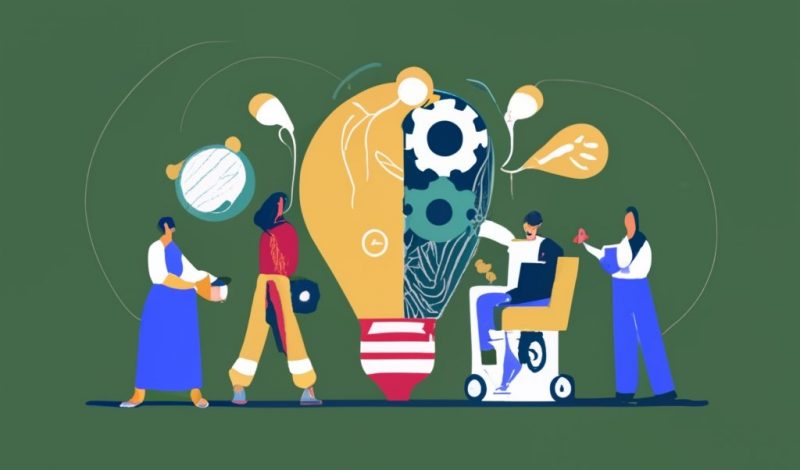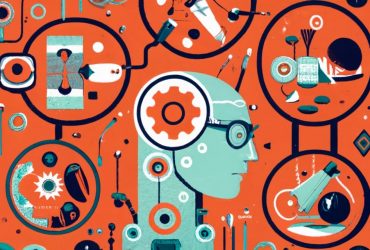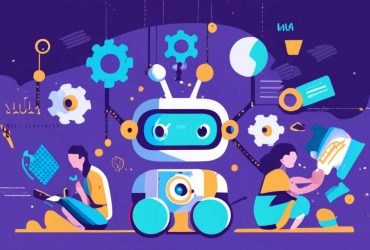The Unique Value of Artisanal Creations
In an increasingly digitized and automated world, handmade creations provide a sense of human connection and skill mastery often lacking in mass productions. Each artisanal piece bears the imprint of focused creative vision combined with hard-won technique. Handcrafted goods carry significance not just from final utility but also from being the culmination of a journey toward mastery. As AI capabilities expand, human-centered arts and crafts grow in emotional resonance as bastions of continuity amid technological upheaval.
AI-Powered Creativity: A New Frontier
Rather than fully replacing human crafters, AI offers new frontiers of creative potential as a digital collaborator. Emerging techniques like generative adversarial networks and style transfer produce original designs, patterns and compositions AI systems draw from data but which no human could envision directly. These computational artworks inspire new ideas in human creators. Recommendation algorithms also suggest novel pairings of colors, textures and materials that spur experimentation. As an imaginative partner, AI promises to radically expand the diversity and scope of what’s possible in handcrafted arts.
Generative AI and Artisanal Inspiration
Generative adversarial networks represent an AI technique with particular relevance for artisanal creation. Two neural networks contest with each other – one generates new artifact designs while the other judges quality and novelty. The output is an endless stream of unique concept art restricted only by the parameters of the training data. Jewelers, textile artists, wood carvers and other craftspeople can derive inspiration from the novel compositions created algorithmically. Rather than replace artisans outright, these tools enhance their ability to develop groundbreaking new styles and works.
| Application | Description |
| Design | AI generative algorithms create original designs, patterns and 3D models for artisans to base their creations on |
| Ideation | Neural networks recommend novel color schemes, material combinations and crafting techniques to spur human creativity |
| Creative Collaboration | Humans and AI systems work together interactively to ideate and iterate on craft designs |
Human-AI Co-Creation in Artisanal Practices
Collaborative creation between artisans and AI represents an emerging trend set to reshape handicrafts. Rather than full automation displacing human direction, master crafters remain integral curators in the creative process while tapping exponential computational capabilities. Interactive ideation sees algorithms generate endless creative variations for evaluation and selection by jewelers, furniture builders or glass workers. The result is digitally augmented works still guided by human aesthetic judgment and cultural perspective. This symbiosis between computational muse and artisanal maker points toward an artistic renaissance fusing technology with traditional technique.
Ethical and Legal Considerations in AI-Enhanced Artisanal Practices
While promising, the growing role of AI in craftsmanship necessitates caution around ethics and rights. As generative tools permeate creative sectors, questions around attribution, accountability and IP protections emerge. If AI-human collaboration becomes widespread, updated legal frameworks are needed ensuring artisans retain hard-won reputations and clients. Additionally, policies should safeguard professionals’ incomes as workflows transform. Maintaining transparency and equitable standards remains crucial as algorithms permeate the artisanal domain, so human imagination stays ascendant.
The Democratization of Artisanal Creativity
Mastering intricate artistic crafts has historically required long apprenticeships and raw talent – barriers that limit participation. But the rise of assistive AI technologies promises to open doors for more people to access advanced techniques once restricted by skill and scarcity. Through intelligent tutorials, remote collaboration tools, and adaptive coaching, folks lacking privileged training or innate ability can still gain creative confidence, dignity through self-expression, and cultural belonging.
However, we need to be attentive – while AI makes space for more voices, over-reliance risks generic cookie-cutter creations that fail to honor rich, region-specific artisan traditions.
AI-Enabled Innovation in Handmade Crafts
Looking beyond just augmenting existing methods, embedding AI into artisanal workflows is also catalyzing radical innovations. By fusing computation with physical manipulation, artisans are birthing wholly novel production techniques and previously unthinkable capabilities. Take glass blowing – computer vision and AI motion planning enables robotic arms to shape molten glass with intricate filigrees no human hand could execute manually. And algorithmic co-design helps ceramicists discover dynamic glaze chemistry yielding fractal crystalline surfaces. Meanwhile, knitters use GAN-powered models to design sweaters that self-assemble from digitally engineered yarn. Cross-connecting AI with time-honored crafts pushes the frontiers of possible handmade excellence.
Empowering Artisans with AI Tools
AI promises to democratize the means for artisanal excellence by expanding capabilities for creators at all skill levels. Beginners can leverage intelligent tutorial systems using computer vision and natural language processing to provide real-time feedback as they learn new techniques. Generative design algorithms empower hobbyists to create complex artifacts matching masters. Meanwhile professionals integrate things like tiny supervised robot arms to add staggering detail to works. And aged artisans unable to manipulate fine tools get a renewed lease on their craft using smart assistants. Democratized access to advanced methods could lower production costs as well. AI artisanal tools represent a rising tide lifting all ships across the creativity spectrum.
The Future of Artisanal Creativity: AI Integration
Current rapid advances in algorithmic art signal a future where generative AI, adaptive robotics and intuitive design software become standard in artisanal studios. Seamlessly interweaving digital intelligence with material creation will push craft excellence to new heights. Expect to see previously impossible feats like micro-scale atomized glazing, kinetically-morphing furniture from synthetic claytronics, stained glass with fractal complexity, and fabrics with 3D-printed weaves. We stand upon the cusp of an artisanal renaissance fueled by augmented tools and inspiration from artificial intelligence. The question artisans must ask going forward is no longer whether to integrate AI, but how best to collaborate with it based on their creative goals.
Conclusion: Embracing the Symbiosis of Artisanal Mastery and AI
In the dawning age of artificial intelligence, a symbiosis between algorithms and artisan represents the most fruitful path ahead rather than an oppositional dichotomy. Computational creativity systems offer exponential idea generation, super-human precision through robotics and unlimited technical optimizing unshackled by physical reality. Meanwhile human creators bring taste, meaning, emotional resonance, style and social/cultural dialogue. Those embracing this synergistic melding between artificial tools and learned craft stand to claim an artistic competitive edge and radically push creative boundaries. By judiciously tapping algorithmic abilities, the future horizons of possible handmade excellence look scintillating for discerning and adaptable artisans without abandoning heritage and humanity.
Frequently Asked Questions
How will perceptions around handcrafted goods shift as AI integration advances?
As automation increases, handmade goods may grow in perceived prestige and value due to scarcity and representing pinnacles of human creativity augmented by technology.
What are the main benefits AI offers to human artisans?
Key perks are expanded creative options through generative algorithms, boosted precision/scale capabilities via robotics, accelerated innovation in materials/techniques, and lowered barriers to entry for novice creators through smart tools.
How could small artisan businesses leverage AI systems financially?
Collectives could share costs of advanced AI tools. Some may shift from finished goods to selling specialized components, custom prints or unique materials enabled by their AI systems to larger manufacturers.
What are some promising innovations in AI application for artisanal creation?
Areas like procedural generation, smart reactive ingredients, augmented reality assistance, computer vision process refinement, exquisite detail nanofabrication through robotics, and rapid customization through adaptive algorithms demonstrate AI’s transformative promise.
How can artisans future-proof their career trajectory in light of advancing AI?
Paths forward include mastering human-AI collaboration, continuously integrating emerging assistive tools, focusing more on conceptual creativity while automating rote tasks, and specializing in niches highlighting artisanal ingenuity meshed with tech.
Thank you again for the opportunity to provide an article draft. Please let me know if you need any clarification or have additional requirements to address.



